

Vadstena as a town is mainly known for the mother monastery of the Order of the Saviour with its imposing monastery church and the Renaissance castle from the Wasa era.
Other medieval churches can be found on the plain that stretches out before the city gates. Two of them are among the oldest stone churches in Sweden (Herrestad 1112 and Örberga 1116).
The churches in Östgöta Dal, as the area between Vadstena and Omberg is called, were often built as courtyard churches and in timber construction, some as stave churches. This happened during the transition period from the Viking Age to Christianity (11th century).
From around 1100, limestone was discovered as a building material in Sweden, which is easily accessible on the north side of the Omberg, in the area of today's Borghamn. The wooden churches were then replaced by stone churches.
Cistercian monks from France founded the monastery in Alvastra and brought with them a great deal of knowledge about stonemasonry. They influenced the architecture of some of the churches when they were later extended. Örberga and Rogslösa clearly show this influence through their cross choirs and other details.
The monastery church in Vadstena - Sweden's fourth largest church and a Lutheran parish church since 1830 - is open daily and can be visited outside of church services and other church events. Group tours are organised by UpplevVadstena.
The churches in Östgöta Dal are open daily in summer. Individual public tours are organised every year. For group visits to Rogslösa and Väversunda, please also contact UpplevVadstena.
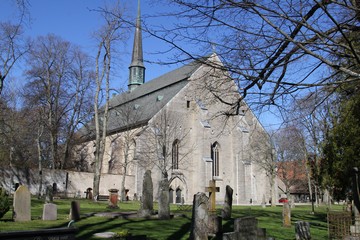
In 1346 King Magnus Eriksson and Queen Blanka testamented their royal palace from about 1260 for the foundation of a royal burial church with an adjoining monastery. At the same time, Birgitta Birgersdotter received revelations in which God gave her the task of establishing a new monastic order based in Vadstena. In the end, Birgitta's vision became reality and Vadstena became the Mother Monastery of the Order of the Most Holy Savior and Birgitta respectively.
In the revelations of St. Birgitta there are detailed regulations on how the monastery and church should be built. The church was to be simple, humble and strong, a hall church with three naves of equal height, fifteen cross vaults without painted windows, with whitewashed interior walls. Limestone from the quarry in Borghamn, south of Vadstena, was used as construction material.
The monastery was built as part of a awakening movement, and the monastery were designed to accommodate visitors from near and far. In order to make room for a large, open meeting place, the church received its entrance in the east with the high altar in the west, completely contrary to ecclesiastical custom. The pilgrims had access to the church corridor, while the nuns' choir was located on a gallery in the nave. The monks had their choir in the western part of the church. The monastery was consecrated in 1384 and the church in 1430.
In the church there are several mediaeval objects, among them several altars and the two best-known Birgitta statues, the "realistic" and the "visionary" Birgitta. Birgitta's reliquary contains remains of both Birgitta and her daughter Katarina.
Guided tours for pre-booked groups
Guided tours of Vadstena Abbey church are available throughout the year during opening hours, also in combination
with other guided tours, e.g. city walks, Birgitta walks, guided tours of the Sancta Birgitta Abbey Museum, and more.
You can find out more under Boka en guide.
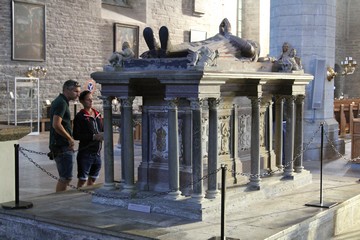
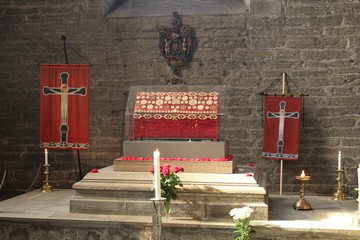
Opening hours
1 June - 31 August
Monday-Friday 08.00-19.00
Saturday and Sunday 09.00-19.00
Midsummer Eve
08.00-17.00
Midsummer Day
09.00-17.00
1 September - 31 May
Monday-Thursday 08.00-16.00
Friday 08.00-19.00
Saturday and Sunday 10.00-16.00
Birgitta Day 7. October
08.00-18.00
Holidays and days before holidays (Christmas, New Year, Three Wise Men)
11.00-14.00
Admission
30 kr (except for church services, prayers)
Monday-Friday
08.00 Laudes (morning prayer)
08.30 Pilgrim's Mass
12.00 Sext (noon prayer)
16.00 Vesper (afternoon prayer)
Saturday
08.00 Laudes (morning prayer)
08.30 Pilgrim's Mass
12.00 Sext (noon prayer)
Sunday
11.00 High Mass
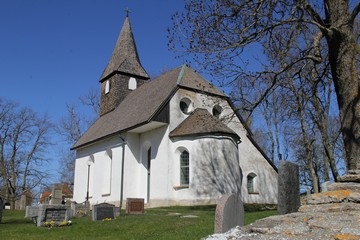
The church of Nässja belongs to the churches of the western Östergötland, which was probably built on the initiative of a local "Storman" gender ("nobility", noble family in the Viking period and the beginning of the Middle Ages). The church is situated in an open, agricultural landscape on a long point of land in Lake Vättern, which forms the western shore of the bay of Vadstena.
Opening hours
1 June - 31 August
Daily 9.00-18.00
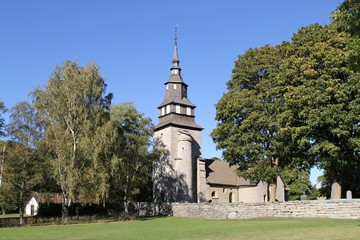
One of Sweden's oldest churches is situated on a hill with fantastic views over the Vättern, Västergötland and the surrounding countryside. In 2016 the Örberga church celebrated its 900th anniversary with art, music, lectures and services.
Opening hours
1 June - 31 August
Daily 9.00-18.00
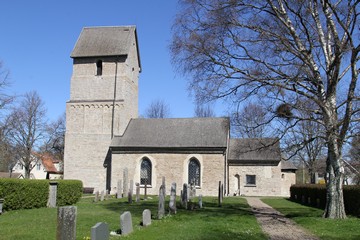
Herrestad was mentioned in writing as a medieval village as early as 1208. The first church at this place was probably built of wood. In 1112 the present building of the church was built from limestone. Herrestad's church is the oldest church in Vadstena and Dal and one of the oldest church buildings in Sweden.
Opening hours
1 June - 31 August
Daily 9.00-18.00
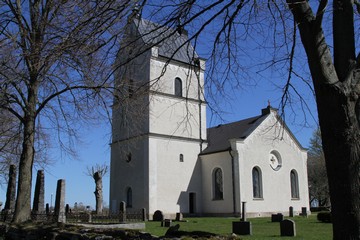
The church of Källstad on the plain near the Tåkern still has its medieval church tower, but was rebuilt in 1868-69. The original church and tower were built in the 12th century on private initiative. Due to its good acoustics, Källstad's church is well suited for concerts.
Opening hours
1 June - 31 August
Daily 9.00-18.00
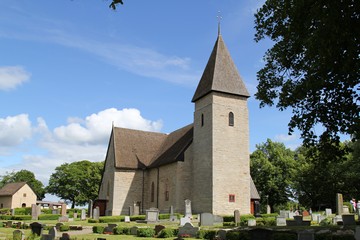
The church was built at the beginning of the 13th century as a private church of the only manor in Rogslösa and replaced a former wooden church. It is mainly known for its entrance portal with the so-called Rogslösa door.
Amongst others, Lydia Wahlström (1869-1954), an active member of the Swedish voting rights and women's movement, the majority of the "incomparable" sisters of Häckenäs and Jonas Andersson, a member of the parliament from Häckenäs, co-founder of Östgöta Dals and Östergötland's Folk High School, are buried in the cemetery.
Opening hours
1 June - 31 August
Daily 9.00-18.00
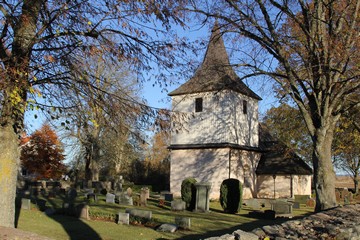
A romanesque and well-preserved medieval church from about 1160, built of Ombergs limestone. The predecessor was probably a stave church.
Opening hours
1 June - 31 August
Daily 9.00-18.00
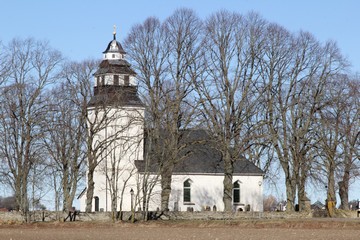
The church of Strå, a few kilometres south of Vadstena and with a wide view over the plains and town, was originally built in the 12th century and received its characteristic spire in 1771 from Mårten Beurling. It has been rebuilt several times inside.
Opening hours
1 July - 31 August
Daily 10.00-17.00
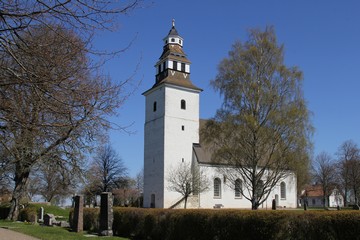
The church in Hov was built in the 12th century and is one of the oldest churches in the vicinity.
Opening hours
1 June - 31 August
Daily 10.00-18.00
 Tomb of Duke Magnus
Tomb of Duke Magnus
 Reliquary of St Birgitta
Reliquary of St Birgitta
St Birgitta's revelations contain detailed instructions on how the monastery and church were to be built. The church was to be of "smooth work, humble and strong", a hall church with three equally high naves, fifteen cross vaults, without painted windows and whitewashed interior walls. The building material used was limestone from a quarry in Borghamn south of Vadstena.
Vadstena Abbey was built as part of a revivalist movement and the monastery area was designed to receive visitors from near and far. To make room for a large open space in front of the church, the entrance to the church was placed in the east and the high altar in the west, contrary to the usual practice. Pilgrims had access to the floor of the church. The nuns had their choir on top of a gallery. The monks' choir was located in the western part of the church. The monastery was consecrated in 1384 and the church in 1430.
In the monastery church there are several medieval inventories, including several altars and the two most famous Birgitta sculptures, the "portrait-like" and the "ecstatic" Birgitta. Birgitta's reliquary contains the remains of both Birgitta and her daughter Katarina.
Language: Swedish, German, English
Time: 1 hour
Participants: max. 30 people / group and guide
Price:
Monday-Friday: 1500 SEK incl. VAT
Saturday/Sunday/Holiday: 1875 SEK incl. VAT
Mini groups:
Monday-Friday: 120 SEK per person, minimum 720 SEK incl. VAT.
Saturday/Sunday/Holiday: 150 SEK per person, minimum 900 SEK incl. VAT.
Entrance fee to the abbey church:
30 SEK/adult plus 250 SEK per group with guide.
The tour of Vadstena Abbey Church can be concluded or combined with a visit to the
Sancta Birgitta Klostermuseum or a city walk.
Vadstena Klosterkirche + Sancta Birgitta Klostermuseum
Language: Swedish, German, English
Time: 1 1/2 hours
Participants: max. 25-30 people / group and guide
Price: on request.
UpplevVadstena AB
Skedagatan 208, 592 93 Borghamn
+46-143-201 19, +46-76-765 1317